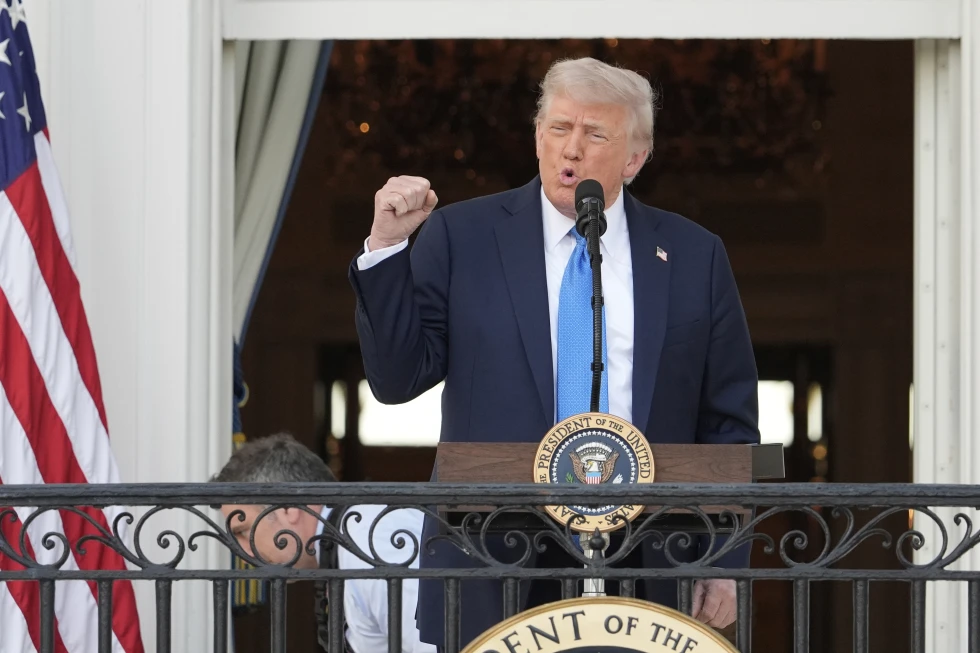WASHINGTON — President Donald Trump has signed a new proclamation reinstating a sweeping travel ban that will block entry into the United States for nationals from a dozen countries beginning Monday, reviving a policy that stirred global controversy during his first term.

The executive action, announced late Wednesday, targets nationals from Afghanistan, Myanmar, Chad, the Republic of Congo, Equatorial Guinea, Eritrea, Haiti, Iran, Libya, Somalia, Sudan, and Yemen. Additional restrictions will apply to visitors from Burundi, Cuba, Laos, Sierra Leone, Togo, Turkmenistan, and Venezuela, the White House confirmed.
The restrictions are set to take effect at 12:01 a.m. Monday.
“I must act to protect the national security and national interest of the United States and its people,” Trump stated in the proclamation, citing findings from a classified report by the State Department, Department of Homeland Security, and the Director of National Intelligence. The report was ordered under a Jan. 20 executive directive instructing agencies to identify countries demonstrating “hostile attitudes” toward the United States or posing potential security threats.
Ten of the 19 countries subject to bans or restrictions are located in Africa, with nine of them being majority-Black African nations. Notably, several countries on the list — including Sierra Leone, Togo, and Equatorial Guinea — have not been widely associated with extremist activity targeting the West.
The move is reminiscent of Trump’s initial travel ban enacted in January 2017, which barred entry from seven majority-Muslim countries — Iraq, Syria, Iran, Sudan, Libya, Somalia, and Yemen. That executive order triggered immediate confusion and chaos at airports globally, leading to mass detentions and flight cancellations for students, business travelers, and families alike.
Dubbed the “Muslim ban” by critics, the measure was eventually revised multiple times amid legal challenges. A later version, upheld by the U.S. Supreme Court in 2018, maintained restrictions on several of the original countries while adding others, including North Korea and certain Venezuelan government officials and their relatives.
Trump and his allies have repeatedly defended the ban on national security grounds, insisting it is designed to protect Americans from potential terrorist infiltration, not to target specific religious or ethnic groups. However, during his 2016 campaign, Trump openly called for a “total and complete shutdown of Muslims entering the United States,” which critics have cited as evidence of discriminatory intent behind the policy.
The updated list represents an expansion of Trump’s original travel restrictions. Unlike previous iterations, the latest proclamation draws from a broader set of intelligence and geopolitical criteria. Though officials did not release detailed justification for each country’s inclusion, administration sources described the move as part of a long-term strategy to tighten border security and reassert control over the immigration system.
The countries under the latest ban are categorized as failing to meet baseline security protocols or exhibiting adversarial behavior toward the U.S. government, according to the White House. Entry restrictions are expected to affect a range of travelers, including immigrants, tourists, students, and business visa applicants.
Civil rights groups and immigration advocates swiftly condemned the move, warning it would again disproportionately impact Muslim and African nations and sow confusion for travelers and legal immigrants alike.
The administration, however, is expected to defend the legality of the new order using the precedent set by the 2018 Supreme Court ruling.
With this latest policy, Trump returns to a hallmark of his first administration’s immigration agenda, aiming to project a tough stance on national security as his reelection campaign ramps up.



